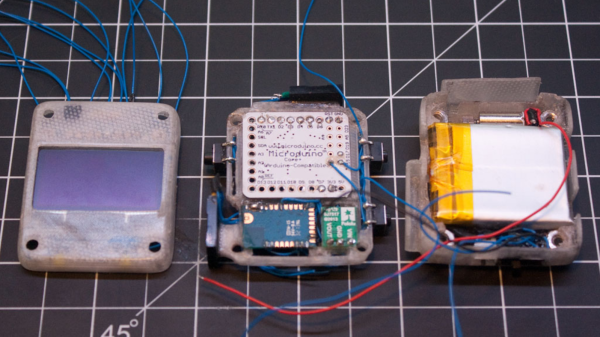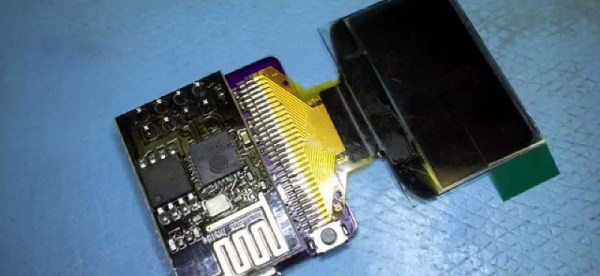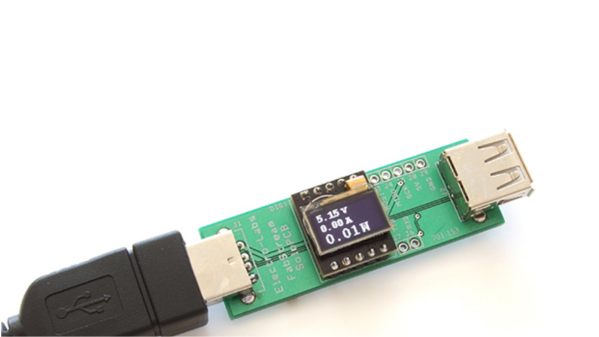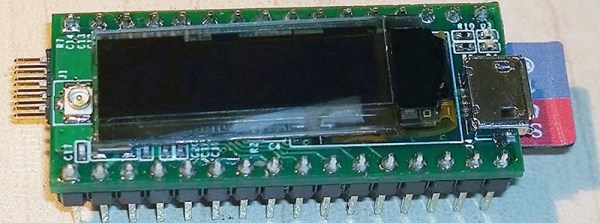[陳亮] (Chen Liang) is in the middle of building the ultimate ring watch. This thing is way cooler than the cheap stretchy one I had in the early 1990s–it’s digital, see-through, and it probably won’t turn [陳]’s finger green.
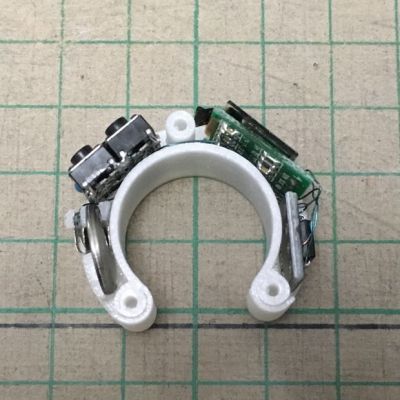 The current iteration is complete and builds upon his previous Arduino-driven watch building experiences. It runs on an ATtiny85 and displays the time, temperature, and battery status on an OLED. While this is a fairly a simple build on paper, it’s the Lilliputian implementation that makes it fantastic.
The current iteration is complete and builds upon his previous Arduino-driven watch building experiences. It runs on an ATtiny85 and displays the time, temperature, and battery status on an OLED. While this is a fairly a simple build on paper, it’s the Lilliputian implementation that makes it fantastic.
[陳] had to of course account for building along a continuous curve, which means that the modules of the watch must be on separate boards. They sit between the screw bosses of the horseshoe-shaped 3D-printed watch body, connected together with magnet wire. [陳] even rolled his own coin cell battery terminals by cutting and doubling over the thin metal bus from a length of bare DuPont connector.
If you’re into open source watches but prefer to wear them on your wrist, check out this PIC32 smart watch or the Microduino-based OSWatch.

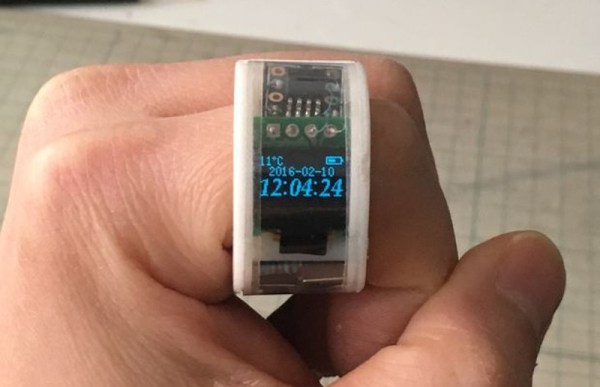

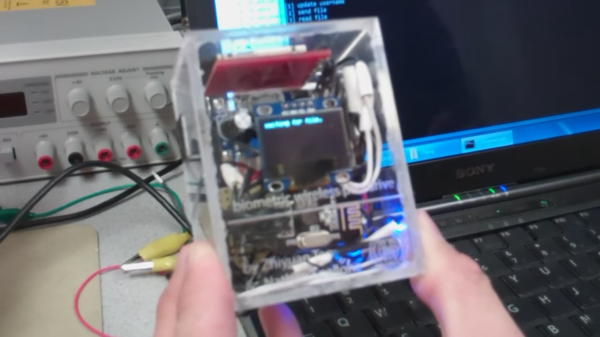
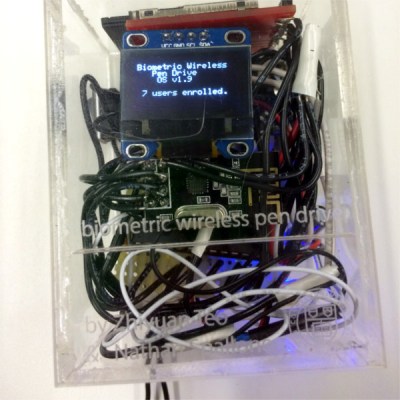 Their solution can be used by up to 20 different people who each get a slice of an SD card in the storage unit There are two physical pieces, a base station and the wireless storage unit itself. The base station connects to the host PC over USB and contains an Arduino for serial pass-through and an nRF24L01+ module for communicating with the storage side. The storage drive’s components are crammed inside a clear plastic box. This not only looks cool, it negates the need for cutting out ports to mount the fingerprint sensor and the OLED. The sensor reads the user’s credentials through the box, and the authentication status is displayed on an OLED. Files are transferred to and from the SD card over a second nRF24L01+ through the requisite PIC32.
Their solution can be used by up to 20 different people who each get a slice of an SD card in the storage unit There are two physical pieces, a base station and the wireless storage unit itself. The base station connects to the host PC over USB and contains an Arduino for serial pass-through and an nRF24L01+ module for communicating with the storage side. The storage drive’s components are crammed inside a clear plastic box. This not only looks cool, it negates the need for cutting out ports to mount the fingerprint sensor and the OLED. The sensor reads the user’s credentials through the box, and the authentication status is displayed on an OLED. Files are transferred to and from the SD card over a second nRF24L01+ through the requisite PIC32.